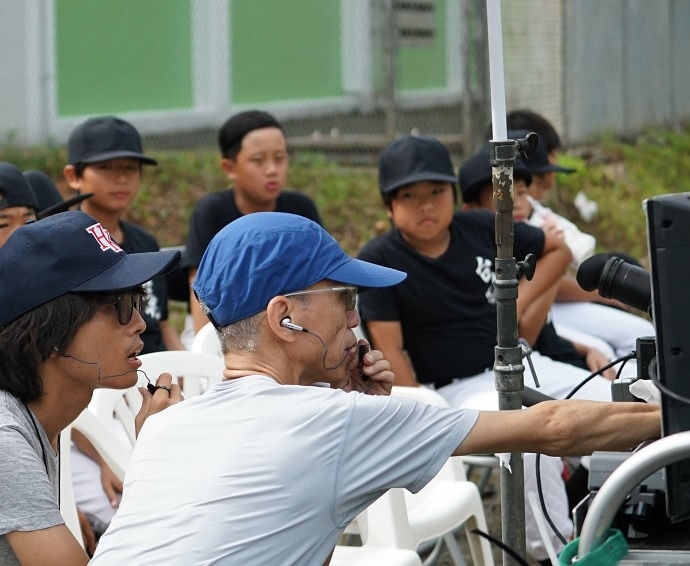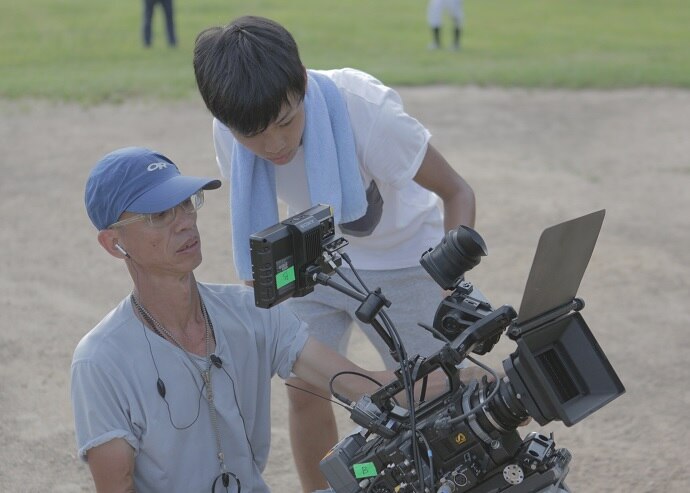'Weeds on Fire' delivered a tale of underdogs with Sony's F55 and FS700R
Directed by Chan Chi-fat and co-produced by O Sing Pui and Chan Hing-kai, Weeds on Fire narrated the story of Shatin Martins, Hong Kong’s first youth league baseball team, who eventually defeated regional heavyweights and won the Hong Kong Little League Championship in the 1980s.

As a renowned cinematographer and a member of the Hong Kong Directors’ Guild and President of the Hong Kong Society of Cinematographers, O Sing Pui has directed and photographed several blockbusters. As a passionate and successful individual in the movie industry nominated for best cinematography at the Golden Horse Awards 2001 and Hong Kong Film Awards 2008, O has contributed to the scene by creating a new direction of cinematography in his career.
New Hong Kong filmmakers look up to him as a mentor who pioneered independent cinema by photographing milestones works including Bryan Chang’s Before the Crescent and Fruit Chan’s Made in Hong Kong. Further, he has lensed Pang Hocheung’s first film You Shoot, I Shoot; Heroes in Love, an omnibus file directed by Wing Shya, Nicholas Tse, Stephen Fund and Vincci Cheuk; and the debut film of Derek Kwok, The Pye Dog.
With his dedication, O recently co-produced Weeds on Fire, the winning project for the Higher Education Institutions Group of the First Feature Film Initiative (FFFI). Directed by Chan Chi-fat, Weeds on Fire is based on the success of Hong Kong’s first teenage baseball team in the 80s. Utilizing Sony’s PMW-F55 as well as NEX-FS700R, O shared with us his experience with the cameras.
What format did you choose to shoot in, and how did you arrive at that choice?
Although I had the option to film in 4K which was brilliant in terms of the resolution, I decided to film the movie in 2K for footage consistency. Not only does it save a significant amount of storage spaces, 2K footage was more appropriate for this movie which reflected Hong Kong in the 80s.
How would you describe the ease of use when handling the F55 and FS700R?
I had no issues handling both F55 and FS700R.
F55 was the main camera for this project. Although it is designed as small and lightweight, the camera body is sturdy and I did not fear that the camera will break apart when shooting action scenes. In terms of operability, I was extremely impressed by the intuitive one-touch interface and customisable user menu of the F55 which was pretty easy to maneuver. I prefer to have more options and F55 satisfied this area and aided me in my creative works as I do not have difficulties reaching my favourite settings.
Similarly, FS700R has a sophisticated ergonomic design and in my perspective, a better choice in terms of shooting action footage. I was also able to attach a wide range of lenses which gave me flexibility and aided me in creative expression.

Any other points about the cameras that you would like to highlight? E.g. did you make any surprise discovery about the camera during the course of shooting?
I was awed that the quality of the footage met my expectation and I was confident during shooting that I did not have to check every shoot as we were pretty pressed for time. In addition, FS700R, with its superb dynamic range, supports raw file shooting and thus gives a great range to do colour grading. I felt that this was extremely useful for post-production.

Would you use these cameras again, whether for similar shooting situations or other shoots?
Yes, definitely. The camera functions provided me with a lot of flexibility while shooting and serve the intended purpose for the movie. Although I had no time to review but I was confident that the footage F55 and FS700R will definitely match my expectation.
FFFI, launched in March 2013 by CREATE Hong Kong (CreateHK) of the Commerce and Economic Development Bureau, aims to support new directors and their film production teams to make their first commercial feature film. The initiative, supported by the Film Development Council (FDC) and funded by the Film Development Fund (FDF) for the winning teams, commenced again in March 2017.